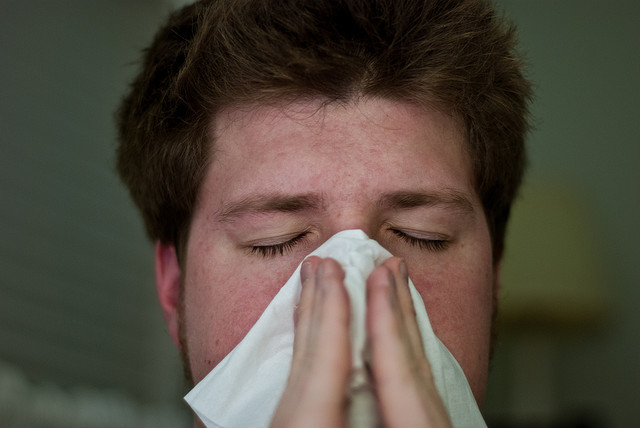
With environmental concerns, outdoor air pollution gets a lot of media attention. According to the U.S. Environmental Protection Agency (EPA), the level of pollutants in indoor air can be two to five times higher than the levels found outside. The agency lists polluted indoor air is one of the top public environmental health risks. As the average person in the U.S. spends 90 percent of his or her time indoors, indoor air filtration and adequate ventilation are essential to reducing their exposure to harmful emissions and airborne contaminants.
Common Pollutants in Indoor Air
- Volatile organic compounds (VOCs): Found in adhesives, paint, new flooring, pesticides, dry-cleaned clothes, air fresheners and other common items, VOCs produce harmful chemical emissions that have long- and short-term health effects.
- Combustion pollutants: Items that burn inside the home using gas, oil or wood—such as water heaters, gas stoves, fireplaces and furnaces—produce combustion pollutants. The World Health Organization (WHO) states that this type of indoor air pollution is the most dangerous to children, particularly those in developing countries, as they may lead to life-threatening acute lower respiratory infections. Among the most dangerous combustion pollutants are nitrogen dioxide and carbon monoxide.
- Mold: Mold in offices and homes form when there is excess moisture and inadequate ventilation. Depending on an individual’s sensitivity, molds may trigger allergy or asthma symptoms. When mold colonies produce mycotoxins, the people exposed to it may fall ill with allergy-like symptoms or respiratory illnesses.
- Biological particulates: Viruses, bacteria, dust mite feces, cockroach exoskeleton particles, pollen, pet dander and general dust are biological pollutants that are often invisible to the naked eye. In allergy sufferers, exposure to particulates can make them feel miserable if a building lacks indoor air filtration. In individuals with asthma, biological particulates may trigger asthma attacks.

Symptoms of Poor Indoor Air Filtration
The types of symptoms caused by indoor air pollution depend on the type of pollutant, an individual’s age and his or her immune system. Children are more susceptible to indoor pollutants because they breathe greater volumes of air for their size compared to adults. An individual with a compromised or suppressed immune system may also be at risk of falling ill from indoor pollutants. Awareness of indoor air pollution symptoms ensures that you can take proactive measures to eliminate them from your home or business.
Common symptoms include:
- Headaches
- Congestion
- Coughing
- Sneezing
- Sore throat
- Difficulty breathing
- Watery or itch eyes
- Dizziness
- Fatigue
Severe symptoms:
- Rashes
- Eye infections
- Shortness of breath
- Rapid heartbeat
- Lethargy
- Nausea
- Vomiting
- Hearing loss
Prolonged exposure to certain pollutants, such as lead or carbon monoxide, can lead to chronic ailments or even death when there’s a lack of medical intervention. The EPA’s quick reference chart outlines symptoms associated with different indoor air pollutants. Always seek the advice of a physician regarding any symptoms that you may experience.
The Importance of Proper Indoor Air Filtration
According to the WHO, indoor air pollutants kill 4 million children per year. This figure is greater than the number of worldwide deaths caused by second-hand smoke, AIDS, tuberculosis and malaria combined. While children are more susceptible to indoor air pollutants, adults are also at risk of health threats. Ensuring good ventilation and using an air filtration system reduces your exposure to indoor pollutants, so going inside doesn’t make you feel sick.
In addition to affecting people, poor indoor air quality may cause structural rot in commercial buildings and homes. Air filters trap mold and other organisms that contribute to rot, while good ventilation eliminates excess moisture and promotes healthy relative humidity levels.
AAA Heating and Cooling installs, maintains and repairs indoor air filtration systems, ventilation and exhaust systems, and ductwork. If you think your indoor space is making you or others sick, the experts can perform indoor air quality monitoring and provide you with custom solutions. Call AAA to learn more about creating a healthy indoor environment.
[Photo from William Brawley via CC License 2.0]